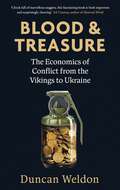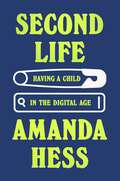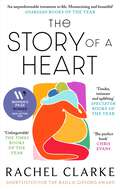- Table View
- List View
A Promise of Ankles: 44 Scotland Street (14) (44 Scotland Street #14)
by Alexander McCall SmithFrom the hugely popular 44 Scotland Street series comes the latest adventures of Bertie and his family and friends.The winds of change are blowing through Scotland Street. Though Bertie is getting older, he can't resist an adventure to escape his domineering mother, and Bruce, ever the navel-gazer, will have to bring his best self to navigate the complexities of the pas de deux. While Alexander McCall Smith's delightfully warm and witty comedy takes some surprising turns, the improbable adventures of this quirky cast of Scots will affirm the heart and joy in Edinburgh's New Town.A Promise of Ankles is the fourteenth installment of this beloved series.
Time For Bed
by David BaddielThe Sunday Times bestselling novel from comic genius David BaddielGabriel Jacoby can't get to sleep. In fact, he can't get anywhere at all, either in his Triumph Dolomite or his life. Everything around him, from his large collection of coffee-machines to his balding Bradford-born flatmate, is breaking down. Not that Gabriel is bothered; he's too busy being in love with his intensely happily married brother's wife. Which is why Gabriel chooses to waste all his time - because he knows that whatever else he might achieve, it won't be happiness. There's no way there, when you're in love with your brother's wife.Unless you remember your brother's wife has a sister...
Time For Bed
by David BaddielThe Sunday Times bestselling novel from comic genius David BaddielGabriel Jacoby can't get to sleep. In fact, he can't get anywhere at all, either in his Triumph Dolomite or his life. Everything around him, from his large collection of coffee-machines to his balding Bradford-born flatmate, is breaking down. Not that Gabriel is bothered; he's too busy being in love with his intensely happily married brother's wife. Which is why Gabriel chooses to waste all his time - because he knows that whatever else he might achieve, it won't be happiness. There's no way there, when you're in love with your brother's wife.Unless you remember your brother's wife has a sister...
The Secret Purposes
by David BaddielTHE SECRET PURPOSES, David Baddiel's third novel, takes us into a little-known and still somewhat submerged area of British history: the internment of German Jewish refugees on the Isle of Man during the Second World War. Isaac Fabian, on the run with his young family from Nazism in East Prussia, comes to Britain assuming he has found asylum, but instead finds himself drowning in the morass of ignorance, half-truth, prejudice, and suspicion that makes up government attitudes to German Jews in 1940. One woman, June Murray, a translator from the Ministry of Information, stands out - and when she comes to the island on a personal mission to uncover solid evidence of Nazi atrocities, her meeting with Isaac will have far-reaching consequences for both of them. A haunting and beautifully written tale of love, displacement and survival, THE SECRET PURPOSES profoundly questions the way that truth - both personal and political - emerges from the tangle of history.
The Secret Purposes
by David BaddielTHE SECRET PURPOSES, David Baddiel's third novel, takes us into a little-known and still somewhat submerged area of British history: the internment of German Jewish refugees on the Isle of Man during the Second World War. Isaac Fabian, on the run with his young family from Nazism in East Prussia, comes to Britain assuming he has found asylum, but instead finds himself drowning in the morass of ignorance, half-truth, prejudice, and suspicion that makes up government attitudes to German Jews in 1940. One woman, June Murray, a translator from the Ministry of Information, stands out - and when she comes to the island on a personal mission to uncover solid evidence of Nazi atrocities, her meeting with Isaac will have far-reaching consequences for both of them. A haunting and beautifully written tale of love, displacement and survival, THE SECRET PURPOSES profoundly questions the way that truth - both personal and political - emerges from the tangle of history.
Whatever Love Means
by David BaddielLike most people, Vic Mullan - once described by his best friend Joe as 'a man whose sense of social responsibility is exhausted by pulling over to let an ambulance by' - can remember where he was and what he was doing on the day of Princess Diana's death. Yes, he can remember it particularly well: he was at home, beginning an affair with Emma, Joe's wife.The opening sections of David Baddiel's second novel chart the history of an intense and passionately sexual liaison set against the background of the most hysterical time in recent memory. But as the months wear on, and life and love return to normal, so things become more complex between Vic and Emma. And then, tragedy - a real, local, small-scale tragedy, as opposed to a national, iconic, mythological one - intervenes.Part-satire, part-love story, part-whodunnit, and part-meditation on the nature of sex and death, WHATEVER LOVE MEANS confirms Nick Hornby's assertion that David Baddiel has 'gone straight into the First Eleven of young contemporary British novelists'.
Whatever Love Means
by David BaddielLike most people, Vic Mullan - once described by his best friend Joe as 'a man whose sense of social responsibility is exhausted by pulling over to let an ambulance by' - can remember where he was and what he was doing on the day of Princess Diana's death. Yes, he can remember it particularly well: he was at home, beginning an affair with Emma, Joe's wife.The opening sections of David Baddiel's second novel chart the history of an intense and passionately sexual liaison set against the background of the most hysterical time in recent memory. But as the months wear on, and life and love return to normal, so things become more complex between Vic and Emma. And then, tragedy - a real, local, small-scale tragedy, as opposed to a national, iconic, mythological one - intervenes.Part-satire, part-love story, part-whodunnit, and part-meditation on the nature of sex and death, WHATEVER LOVE MEANS confirms Nick Hornby's assertion that David Baddiel has 'gone straight into the First Eleven of young contemporary British novelists'.
Foreign Bodies
by Amanda CraigAt eighteen, Emma Kenward runs away from her dull Sloane home to try her luck as a painter in Tuscany. Waspish, idealistic and far too clever for her own good, she is at the awkward age when women choose their futures - and their identities.Once in Italy, Emma blossoms and is taken up by a a mixture of characters including the local Contessa; Sylvia, her volatile American mentor; Dr Evenlode, an Oxford don she'd hoped never to see again; and Lucio, a seductive and anarchic young Italian, as interested in Emma's body as in her mind. Santorno, however, is not merely a picturesque town set in the golden landscape of the Tuscan countryside. Hidden among the malicious tongues of the provincial gossips and the walls of the mysterious Palazzo Felici lie secrets, long buried, but not forgotten. Emma, ever curious, delves deep and discovers the truth about her new world, her old self - and a gruesome murder.
Love in the Time of Bertie (44 Scotland Street #15)
by Alexander McCall SmithThe latest in the hugely popular 44 Scotland Street series from the worldwide bestselling author, Alexander McCall SmithLife for Bertie seems to be moving at a pace that is rather out of his control. Upstairs, at 44 Scotland Street, his father Stuart is powerless to stop over-bearing Irene and her determination that Bertie will travel to deepest, coldest Aberdeen on a three-month sojourn. Can his friend Ranald Braveheart Macpherson save the day? And can the boys execute a great escape? Meanwhile, further up in the New Town, Bruce Anderson's property development plans are thwarted by a sudden crisis of conscience that leads to a shocking revelation. And, in Big Lou's cafe, it seems that love might blossom at last.Warm hearted, humorous and always wonderfully wise, Love in the Time of Bertie offers philosophical insight as well as sartorial elegance. There are tribulations as well as celebrations in this the next instalment in the 44 Scotland Street series.
Breath, Eyes, Memory (50th Anniversary Edition)
by Edwidge DanticatWith new introduction from Booker-prize-winning Bernardine Evaristo 'A vision of female solidarity which transcends place and time' Sunday Times Edwidge Danticat's groundbreaking debut. At the age of twelve, Sophie Caco is sent from her impoverished Haitian village to New York to be reunited with a mother she barely remembers. There she discovers secrets that no child should ever know, and a legacy of shame that can be healed only when she returns to Haiti - to the women who first reared her. What ensues is a passionate journey through a landscape charged with the supernatural and scarred by political violence. In her stunning literary debut, Danticat evokes the wonder, terror, and heartache of her native Haiti - and the enduring strength of Haiti's women - with vibrant imagery and narrative grace that bear witness to her people's suffering and courage.
No Country for Love: 'A sweeping romantic epic' Hari Kunzru
by Yaroslav Trofimov'An expansive novel reminiscent of the literary breadth, humanity, and historical depth found in Vasily Grossman's Life and Fate' Christophe Boltanski, winner of the 2015 Prix Femina for The Safe House'A captivating sweep of a novel about love, resilience and impossible choices... I loved it!' Christina Lamb, chief foreign correspondent Sunday TimesSeventeen-year-old Debora Rosenbaum, ambitious and in love with literature, arrives in the capital of the new Ukrainian Soviet Socialist Republic, Kharkiv, to make her own fate as a modern woman. The stale and forbidding ways of the past are out; 1930 is a new dawn, the Soviet era, where skyscrapers go up overnight. Debora finds work and meets a dashing young officer named Samuel who is training to become a fighter pilot. They fall in love, and begin to mix with Ukraine's new cultural elite. But Debora's prospects - and Ukraine's - soon dim. State-induced famine rolls through the over-harvested countryside, and any deviation from Moscow-dictated ideology is punished by disappearance. When Samuel is sentenced to ten years' hard labour, Deborah is left on her own with a baby. And this is only the beginning. As advancing Nazi armies move through Ukraine during World War II, its yellow fields of wheat run red with blood. Forced to renounce the man she loves, her identity and even her name, Debora also learns to endure, manipulate and resist.No Country for Love follows the hard choices Debora makes as Ukraine, caught between two totalitarian ideologies, turns into the deadliest place in the world - while she tries to protect those she loves most.A sweeping, stunningly ambitious novel about a young Ukrainian girl arriving in Kharkiv in 1930, determined to contribute to the future of her country, and her struggle to survive the devastation and trauma that ravage Ukraine.
No Country for Love: 'A sweeping romantic epic' Hari Kunzru
by Yaroslav Trofimov'An expansive novel reminiscent of the literary breadth, humanity, and historical depth found in Vasily Grossman's Life and Fate' Christophe Boltanski, winner of the 2015 Prix Femina for The Safe House'A captivating sweep of a novel about love, resilience and impossible choices... I loved it!' Christina Lamb, chief foreign correspondent Sunday TimesSeventeen-year-old Debora Rosenbaum, ambitious and in love with literature, arrives in the capital of the new Ukrainian Soviet Socialist Republic, Kharkiv, to make her own fate as a modern woman. The stale and forbidding ways of the past are out; 1930 is a new dawn, the Soviet era, where skyscrapers go up overnight. Debora finds work and meets a dashing young officer named Samuel who is training to become a fighter pilot. They fall in love, and begin to mix with Ukraine's new cultural elite. But Debora's prospects - and Ukraine's - soon dim. State-induced famine rolls through the over-harvested countryside, and any deviation from Moscow-dictated ideology is punished by disappearance. When Samuel is sentenced to ten years' hard labour, Deborah is left on her own with a baby. And this is only the beginning. As advancing Nazi armies move through Ukraine during World War II, its yellow fields of wheat run red with blood. Forced to renounce the man she loves, her identity and even her name, Debora also learns to endure, manipulate and resist.No Country for Love follows the hard choices Debora makes as Ukraine, caught between two totalitarian ideologies, turns into the deadliest place in the world - while she tries to protect those she loves most.A sweeping, stunningly ambitious novel about a young Ukrainian girl arriving in Kharkiv in 1930, determined to contribute to the future of her country, and her struggle to survive the devastation and trauma that ravage Ukraine.
A Death in Tokyo (The Detective Kaga Series #3)
by Keigo HigashinoThe third and penultimate novel in the Detective Kyoichiro Kaga series by bestselling Japanese crime writer Keigo HigashinoOn the Nihonbashi Bridge in Tokyo stands the statue of a mythic beast - a kirin. One evening a man staggers onto the bridge and collapses beneath the winged creature. The patrolman on watch goes to rouse the man, who he presumes to be drunk - only to discover that the man had been stabbed in the chest. He is dead.Meanwhile, a young man named Yashima is injured in a car accident nearby while trying to flee from the police. Found on him is the wallet of the murdered man.But is he actually responsible for the crime? What is his connection to the victim? And why did the dying man drag himself from the crime scene to the Nihonbashi Bridge? Tokyo Police Detective Kyoichiro Kaga must piece together the answers to all of these questions in order to find the killer, but each answer he finds seems to throw up more questions ...Taking us deep into the heart of Tokyo, and reintroducing the charming and ingenious Detective Kyoichiro Kaga, A Death in Tokyo is another mind-bending and hugely satisfying murder mystery from the modern master of classic crime.
Blood and Treasure: The Economics of Conflict from the Vikings to Ukraine
by Duncan WeldonBlood and Treasure is the story of the economics of conflict from the Viking Age to the war in Ukraine.'Absolutely fascinating and totally absorbing' JAMES HOLLAND'A brilliant book' MARTIN WOLF, FINANCIAL TIMES CHIEF ECONOMICS EDITOR'Chock full of marvellous nuggets, this fascinating book is both important and surprisingly cheering' ED CONWAY'A delightfully quirky approach to military history' SPECTATORWars are expensive, both in human terms and monetary ones. But while warfare might be costly it has also, at times, been an important driver of economic change and progress. Over the long span of history nothing has shaped human institutions - and thus the process of economic development - as much as war and violence. Wars made states and states made wars. As the costs of warfighting grew so did state structures, taxation systems and national markets for debt. And as warfare became ever more destructive the incentive for governments to resort to it changed too. Blood and Treasure looks at the history and economics of warfare from the Viking Age to the war in Ukraine, examining how incentives and institutions have changed over time. It surveys how warfare may have driven Europe's rise to global prominence, and it explains how the total wars of the twentieth century required a new type of strategy, one that took economics seriously. Along the way it asks whether Genghis Khan should be regarded as the father of globalisation, explains how New World gold and silver kept Spain poor, ponders why some economists think of witch trials as a form of 'non-price competition', notes how pirate captains were pioneers of effective HR techniques, asks if handing out medals hurt the Luftwaffe in the Second World War and assesses if economic theories helped to create a tragedy in Vietnam. As well as considering why some medieval kings were right to arm their soldiers with inferior weapons, taking some management lessons from Joseph Stalin and asking if a culture of patronage and cronyism helped the Royal Navy rise to greatness.Underpinning it all is a focus on how and why the economics of conflict have changed over time. Economics can help to explain war and understanding the history of warfare can help explain modern economics.
Blood and Treasure: The Economics of Conflict from the Vikings to Ukraine
by Duncan WeldonBlood and Treasure is the story of the economics of conflict from the Viking Age to the war in Ukraine.'Absolutely fascinating and totally absorbing' JAMES HOLLAND'A brilliant book' MARTIN WOLF, FINANCIAL TIMES CHIEF ECONOMICS EDITOR'Chock full of marvellous nuggets, this fascinating book is both important and surprisingly cheering' ED CONWAY'A delightfully quirky approach to military history' SPECTATORWars are expensive, both in human terms and monetary ones. But while warfare might be costly it has also, at times, been an important driver of economic change and progress. Over the long span of history nothing has shaped human institutions - and thus the process of economic development - as much as war and violence. Wars made states and states made wars. As the costs of warfighting grew so did state structures, taxation systems and national markets for debt. And as warfare became ever more destructive the incentive for governments to resort to it changed too. Blood and Treasure looks at the history and economics of warfare from the Viking Age to the war in Ukraine, examining how incentives and institutions have changed over time. It surveys how warfare may have driven Europe's rise to global prominence, and it explains how the total wars of the twentieth century required a new type of strategy, one that took economics seriously. Along the way it asks whether Genghis Khan should be regarded as the father of globalisation, explains how New World gold and silver kept Spain poor, ponders why some economists think of witch trials as a form of 'non-price competition', notes how pirate captains were pioneers of effective HR techniques, asks if handing out medals hurt the Luftwaffe in the Second World War and assesses if economic theories helped to create a tragedy in Vietnam. As well as considering why some medieval kings were right to arm their soldiers with inferior weapons, taking some management lessons from Joseph Stalin and asking if a culture of patronage and cronyism helped the Royal Navy rise to greatness.Underpinning it all is a focus on how and why the economics of conflict have changed over time. Economics can help to explain war and understanding the history of warfare can help explain modern economics.
A Dangerous Business: from the author of the Pulitzer prize winner A THOUSAND ACRES
by Jane Smiley'Outstanding. Her sentences are sublime' Roxane GayFrom a brilliant Pulitzer Prize-winning and best-selling author: a rollicking murder mystery set in Gold Rush California, as two young prostitutes follow a trail of missing girls.Monterey, 1851. Ever since her husband was killed in a bar fight, Eliza Ripple has been working in a brothel. It seems like a better life, at least at first. The madam, Mrs. Parks, is kind, the men are (relatively) well behaved, and Eliza has attained what few women have: financial security. But when the dead bodies of young women start appearing outside of town, a darkness descends that she can't resist confronting. Side by side with her friend Jean, and inspired by her reading, especially by Edgar Allan Poe's detective Dupin, Eliza pieces together an array of clues to try to catch the killer, all the while juggling clients who begin to seem more and more suspicious.Eliza and Jean are determined not just to survive, but to find their way in a lawless town on the fringes of the Wild West - a bewitching combination of beauty and danger - as what will become the Civil War looms on the horizon.As Mrs. Parks says, 'Everyone knows that this is a dangerous business, but between you and me, being a woman is a dangerous business, and don't let anyone tell you otherwise . . .'
Still a Bit of Snap in the Celery: or K.B.O. *Keep Buggering On
by Marcus BerkmannFrom the bestselling author of A Shed of One's Own, a very funny memoir about being 60.Marcus Berkmann's funny, instantly recognisable description of middle-age in A Shed of One's Own struck a chord and turned it into a bestseller. Now he realises he has entered a new age category: the Young-Old.Well, the body continues to provide challenges (every group meeting seems to begin the dreaded 'organ recital'), and the bank balance may not be doing too well either - but it's certainly not all doom and gloom. You have come to terms with your deficiencies and eccentricities (although your partner may not); your Fear of Missing Out has become Joy at Staying In; you have embraced the notion of the Power Nap - and though you're not going to embark on a course of 'mindfulness' you nevertheless recognise if living in the moment also includes walking to the local for a pint with an old friend then you'll sign up for it after all...You could call it 'beerfulness'.'Berkmann is a fine observer of decline. He says what other men would rather not think about, let alone discuss. Another ten years pottering around in his shed and he'll have cracked it' Sunday Times
Still a Bit of Snap in the Celery: or K.B.O. *Keep Buggering On
by Marcus BerkmannFrom the bestselling author of A Shed of One's Own, a very funny memoir about being 60.Marcus Berkmann's funny, instantly recognisable description of middle-age in A Shed of One's Own struck a chord and turned it into a bestseller. Now he realises he has entered a new age category: the Young-Old.Well, the body continues to provide challenges (every group meeting seems to begin the dreaded 'organ recital'), and the bank balance may not be doing too well either - but it's certainly not all doom and gloom. You have come to terms with your deficiencies and eccentricities (although your partner may not); your Fear of Missing Out has become Joy at Staying In; you have embraced the notion of the Power Nap - and though you're not going to embark on a course of 'mindfulness' you nevertheless recognise if living in the moment also includes walking to the local for a pint with an old friend then you'll sign up for it after all...You could call it 'beerfulness'.'Berkmann is a fine observer of decline. He says what other men would rather not think about, let alone discuss. Another ten years pottering around in his shed and he'll have cracked it' Sunday Times
Second Life: 'Unexpected, funny, beautiful' Claire Dederer, author of Monsters: A Fan's Dilemma
by Amanda HessOne of TIME Magazine's Most Anticipated Books of 2025 . One of LitHub's Most Anticipated Books of 2025.'Unexpected, intellectually rigorous, funny, beautiful' Claire Dederer, author of Monsters: A Fan's Dilemma'What a book! Has the lyricism and intelligence of a literary masterpiece, and the urgency of a thriller' Marianne Levy, author of Don't Forget to Scream'So interesting, astute and beautifully crafted. I loved it' Lucy Jones, author of MatrescenceIn the summer of 2020, when Amanda Hess was pregnant for the first time, a routine ultrasound screening detected a mysterious abnormality in her baby. Without hesitation, she reached for her phone, looking for answers online. But rather than allaying her anxieties, her search unleashed a destabilizing onslaught of data and technology, and she was vulnerable - more than ever - to conspiracy, myth, judgement, commerce and obsession. In Second Life, Hess tells her deeply personal story of a pregnancy that falls outside the fêted category of 'normal'. But this is also a story about all of us. For as she made her way through a bizarre digital world of pregnancy apps, prenatal genetic tests, gender reveal videos, rare disease Facebook groups, 'freebirth' influencers and hospital reality shows, Hess realised that ideas of eugenics, surveillance, ableism and hyper-individualism are being sold through shiny technologies to a new generation of parents.At once funny, surreal and heartbreaking, Second Life asks compelling questions about how our most fundamental human experiences are fractured and reshaped by technology.
The Story of a Heart: WINNER OF THE WOMEN'S PRIZE FOR NON FICTION 2025
by Rachel ClarkeWINNER OF THE WOMEN'S PRIZE FOR NON-FICTION 2025SHORTLISTED FOR THE BAILLIE GIFFORD PRIZE FOR NON-FICTION 2024BOOK OF THE YEAR IN THE SPECTATOR, NEW STATESMAN, NEW SCIENTIST, AND PROSPECT'What a book . . . The perfect book' Chris Evans on Virgin Radio'Profoundly moving and at the same time wildly inspiring' Rob Delaney'Rachel Clarke's finest book yet' Financial Times'The best narrative non-fiction I've read in years. Rachel Clarke has written a profound piece of investigative journalism and wrapped it up in poetry' Christie Watson'This is THE MOST BEAUTIFUL and riveting book: written with such humanity, empathy and knowledge, such tact and drama and eloquence. Vital reading, lifelong revelation' Laura CummingThis is the unforgettable story of how one family's grief transformed into a lifesaving gift. With tremendous compassion and clarity, Dr Rachel Clarke relates the urgent journey of a young girl's heart and explores a history of remarkable medical innovations , stretching back over a century and involving the knowledge and dedication not just of surgeons but of countless physicians, immunologists, nurses and scientists. FROM THE AUTHOR OF THE SUNDAY TIMES BESTSELLER DEAR LIFE AND BREATHTAKING, A MAJOR TV DRAMA
How to Leave the House
by Nathan NewmanThe funniest, wildest and most original debut novel of 2024 'Gobby, barbed and garrulous' Eley Williams'Truly original' Nicola Dinan, author of Bellies'Genuinely hilarious' Keiran Goddard, author of HourglassIt's Natwest's last day before he leaves for university, and there's only one thing on his mind: the deeply embarrassing package he ordered to his house - which still hasn't arrived. He won't leave town without it. Any alternative is too distressing to consider ... This is the story of twenty-four hours in the life of NATWEST, and his small-town odyssey in pursuit of the missing package. And yet it's also the story of a MIDDLE-AGED DENTIST who dreams of being a respected artist - but the only thing he can seem to paint is the human mouth. And it's the story of a TORTURED IMAM involved in a quasi-romantic entanglement with the local vicar; and an OCTOGENARIAN mourning the death of her secretive husband; and a TROUBLED TEENAGER whose nudes have leaked on the internet. It's the story of Natwest's obnoxious EX-BOYFRIEND, and his CLASS-TRAITOR MOTHER and her CHILDHOOD BOYFRIEND, and the life-changing secrets he knows about Natwest's past. Alternating between Natwest's idiosyncratic inner world and the perspectives of the other characters - and dazzling in its energy, imagination and originality - this is an outrageously funny and tenderly moving story about being connected to everyone and everything at all times; about love, friendship, and the lies we tell ourselves; about unhappy endings, happy endings - and whether anything really is as simple as one or the other.
The Enigma of Garlic (44 Scotland Street #16)
by Alexander McCall SmithThe latest in the hugely popular 44 Scotland Street series from the worldwide bestselling author, Alexander McCall SmithIt's the most anticipated event of the decade: Big Lou and Fat Bob's wedding and everyone is invited! After a wonderful day, Big Lou crashes back down to earth and finds that she is a victim of her own success. The lure of those famous bacon rolls is preventing her from leaving hungry customers without their daily dose of deliciousness - even to go for a long-awaited honeymoon. Will Big Lou find the happiness she so richly deserves? Everyone in Scotland Street hopes so, but, as Burns warned, the best laid plans...The relative peace and tranquillity of 44 Scotland Street is about to be disrupted. Irene is to return for a two-month stay, consigning Bertie to a summer camp. Not satisfied with that, she somehow manages to come between the enigmatic nun, Sister Maria-Fiore dei Fiori di Montagna, and her friend, the hagiographer, Antonia Collie.Can a person really change, even after being struck by lightning? Bruce's metamorphosis and new-found outlook on life is put to the test as he prepares to leave his creature comforts for the monastic simplicity of Pluscarden Abbey. His house sitter, meanwhile, gets a little too comfortable in his new life and discovers that the talented Bruce Anderson's shoes are all too easy to slip into. With great taste comes great responsibility.Come and discover The Enigma of Garlic and join the delightful denizens of Edinburgh's most famous address. This latest instalment of the much-loved 44 Scotland Street series is wise, witty, and full of warmth.
The Power and the Glory: A New History of the World Cup
by Jonathan Wilson'A master at telling football's greatest ever stories... Breathtaking. Wilson's eye for detail and his elegant writing brings the World Cup to life like no other book on the topic I have ever read' ELIS JAMES'Epic in scope, awesomely rich in detail, and compulsively entertaining' TOM HOLLAND'So much of what we know of football's history we know thanks to Wilson' SIMON KUPERThe football World Cup is the most watched sporting event on the planet. It has become a global obsession: 211 nations initially entered the 2022 edition. It has been running for almost a century. Yet there is no comprehensive history of the tournament: based on fresh interviews and meticulously researched this book will change that. By 1930, football had outgrown the Olympic Games. A new competition, run by Fifa, would take international football to the next level. After a shambolic start to the first cup in Uruguay - an incomplete stadium, shoddy refereeing and physios accidentally injuring players - the thrilling final saw Uruguay take on Argentina, beating them 4-2. From those chaotic beginnings grew the modern World Cup, a cultural phenomenon that draws the world together like nothing else, and that gives it a profound importance. Ask a random person on a random street to name a moment in the history of Senegal and they may well say Pape Bouba Diop's winner against France in the 2002 World Cup, a goal not only against the defending champions but against the former colonial masters.The World Cup has political significance. West Germany's success in 1954 was a moment of reintegration into global society. Progress to the semi-finals in 1998 gave a huge boost to Croatia's sense of national self. But football is an unpredictable sport. In the so-called Soccer War of 1969 tensions between El Salvador and Honduras were ignited by a World Cup qualifier. More recently, the focus for governments seeking to political gain has been hosting the tournament, with the World Cups in Russia and Qatar clear examples of sportswashing, staging a tournament to project an image of a thriving society.There has never been a comprehensive history of the World Cup that has considered not only the matches and goals, the players and coaches, the tales of scandal and genius, the haggling and skulduggery of the bidding process, but has also placed the tournaments within a socio-political framework. The story of the World Cup is also the story of the world; this book tells its definitive history.
The Power and the Glory: A New History of the World Cup
by Jonathan Wilson'A master at telling football's greatest ever stories... Breathtaking. Wilson's eye for detail and his elegant writing brings the World Cup to life like no other book on the topic I have ever read' ELIS JAMES'Epic in scope, awesomely rich in detail, and compulsively entertaining' TOM HOLLAND'So much of what we know of football's history we know thanks to Wilson' SIMON KUPERThe football World Cup is the most watched sporting event on the planet. It has become a global obsession: 211 nations initially entered the 2022 edition. It has been running for almost a century. Yet there is no comprehensive history of the tournament: based on fresh interviews and meticulously researched this book will change that. By 1930, football had outgrown the Olympic Games. A new competition, run by Fifa, would take international football to the next level. After a shambolic start to the first cup in Uruguay - an incomplete stadium, shoddy refereeing and physios accidentally injuring players - the thrilling final saw Uruguay take on Argentina, beating them 4-2. From those chaotic beginnings grew the modern World Cup, a cultural phenomenon that draws the world together like nothing else, and that gives it a profound importance. Ask a random person on a random street to name a moment in the history of Senegal and they may well say Pape Bouba Diop's winner against France in the 2002 World Cup, a goal not only against the defending champions but against the former colonial masters.The World Cup has political significance. West Germany's success in 1954 was a moment of reintegration into global society. Progress to the semi-finals in 1998 gave a huge boost to Croatia's sense of national self. But football is an unpredictable sport. In the so-called Soccer War of 1969 tensions between El Salvador and Honduras were ignited by a World Cup qualifier. More recently, the focus for governments seeking to political gain has been hosting the tournament, with the World Cups in Russia and Qatar clear examples of sportswashing, staging a tournament to project an image of a thriving society.There has never been a comprehensive history of the World Cup that has considered not only the matches and goals, the players and coaches, the tales of scandal and genius, the haggling and skulduggery of the bidding process, but has also placed the tournaments within a socio-political framework. The story of the World Cup is also the story of the world; this book tells its definitive history.
Shantaram: Now a major Apple TV series starring Charlie Hunnam
by Gregory David RobertsA novel of high adventure, great storytelling and moral purpose, based on an extraordinary true story of eight years in the Bombay underworld.


















